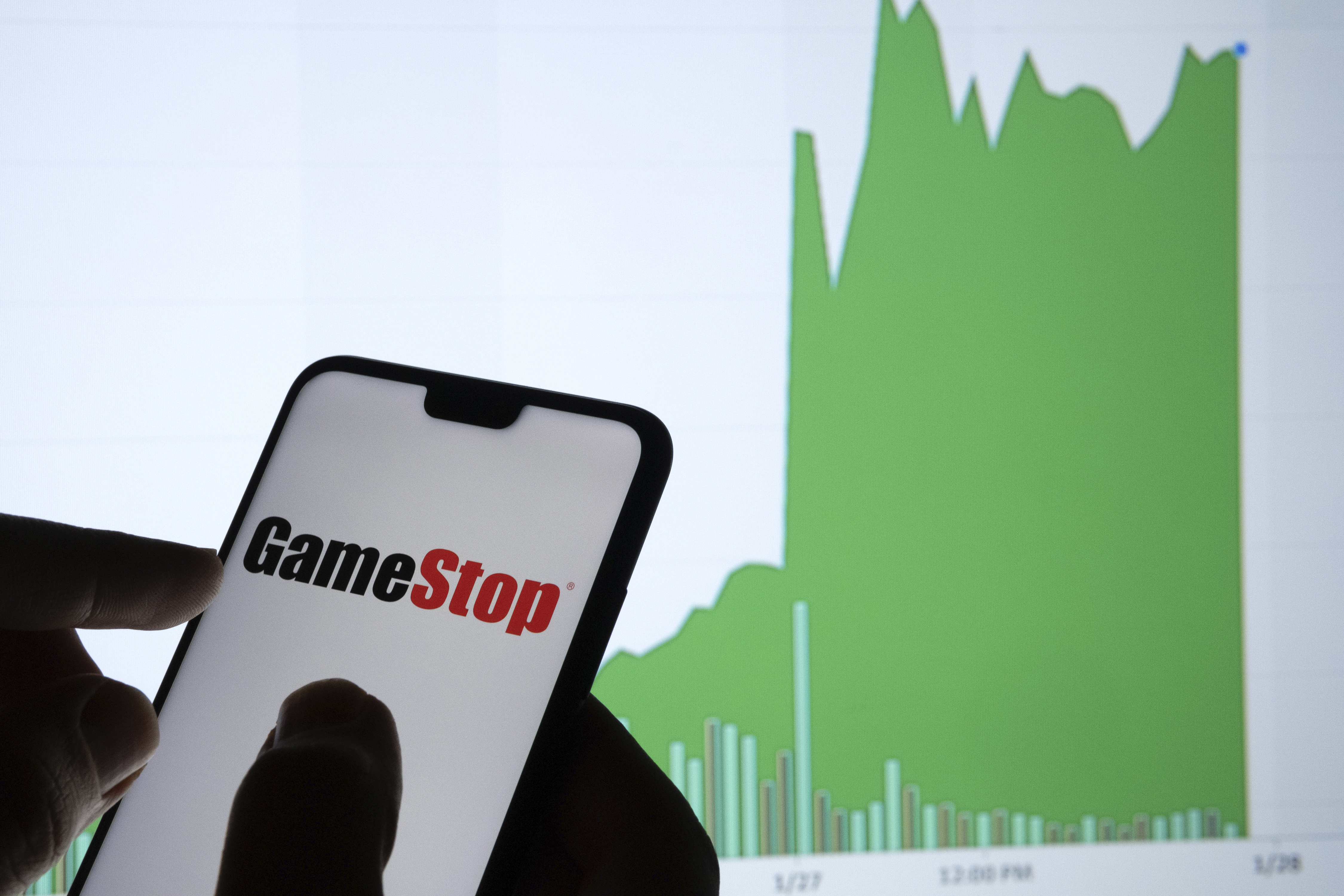Not All Fun & Games(top)
By Shawn Gibson on Mar 02, 2021

By now, everyone is familiar with the Reddit-inspired buying frenzy in a number of highly-shorted stocks where retail traders forced a short squeeze of historic magnitude on some of the world’s largest hedge funds. The stock most mentioned in the ruckus was GameStop (GME), a company that had more shares that were sold short (hedge funds betting on the stock price to decline) than were actually available in the market.
This mismatch creates a major math problem if those that are short are forced to buy shares in the market to avoid further losses as the stock moves higher. This created a vicious cycle where the more GME went up, the more shares short sellers needed to buy to cover losses, resulting in a catapult effect that sent GME from $22 to almost $500 in a matter of a few weeks. While the situation created many winners and losers of various magnitudes, and was fun to talk about with friends and family, it also exposed a serious fracture in the capital markets system that could have severe consequences in the future if not repaired.
When a buyer or short seller of stock (say GameStop) wants to do a trade, they do not have to deposit the full dollar amount of the trade in their account. By utilizing a margin account, investors only need to have a fraction of the potential loss in the trade in their account in order to execute. This margin requirement varies by firm and oftentimes by the security itself, but let’s use a simple example of 25%. If an investor buys a stock for $100 but only has $25 in the account to meet the margin requirement, and if the stock drops below $75, the account goes into negative equity resulting in capital calls and/or risk of immediate liquidation. If the investor has no more capital to put up, this is where the risk to the financial system starts.
Here is the potential chain of events in the scenario where a significant number of customer accounts go into negative equity at the same time:
- The brokerage firms (which are member firms of the clearinghouse that settles trades) posts initial margin for the trade with clearinghouse
- When losses occur, the firm gets more collateral from customers to deposit with the clearinghouse
- If the customer lacks the required capital, the firm needs to liquidate the positions and deposit more collateral with the clearinghouse from their balance sheet
- The parabolic move in these stocks caused enormous margin calls that many clients were not able to satisfy, putting pressure on the balance sheet of the brokerage firms
- If the capital that is required by the brokerage firm to deposit with the clearinghouse exceeds the capital on their balance sheet, that firm could fail
- In the case where a member fails to meet a capital requirement, that capital burden would fall on the remaining members to cover, creating a potential snowball effect, with the Clearinghouse itself being the last line of defense for settling trades
While this chain of events is not likely, it is a risk. Even in 2008 with Bear Stearns and Lehman Brothers failing, it never reached the point where all of the member firms and clearinghouse failed. However, this situation was a bit different in that the capital risk to customers and firms was unlimited, the potential losses for short sellers had no limit. Brokerage firms did and will continue to move to protect themselves by raising firm margin requirements for such trades, and even limiting potential trade sizes. However, this should be a wakeup call for the industry to reevaluate risk management protocols to better control the leverage that investors (regardless of size) can utilize when that leverage creates risk that far exceeds their capital.
Learn more about Overlay Shares and our offerings.
The assertions and statements in this blog post are based on the opinions of the author and Liquid Strategies. The examples cited in this paper are based on hypothetical situations and should only be considered as examples of potential trading strategies. They do not take into consideration the impact that certain economic or market factors have on the decision making process. Past performance is no indication of future results. Inherent in any investment is the potential for loss.
- October 2025 (3)
- August 2025 (1)
- July 2025 (3)
- May 2025 (1)
- April 2025 (7)
- March 2025 (2)
- February 2025 (1)
- January 2025 (1)
- November 2024 (1)
- October 2024 (1)
- July 2024 (2)
- April 2024 (1)
- January 2024 (1)
- November 2023 (1)
- October 2023 (1)
- August 2023 (1)
- July 2023 (1)
- April 2023 (1)
- January 2023 (1)
- November 2022 (1)
- October 2022 (2)
- July 2022 (1)
- April 2022 (1)
- March 2022 (2)
- February 2022 (3)
- January 2022 (3)
- November 2021 (1)
- October 2021 (3)
- September 2021 (1)
- July 2021 (1)
- May 2021 (1)
- April 2021 (1)
- March 2021 (3)
- January 2021 (3)
- December 2020 (3)
- October 2020 (3)
- September 2020 (2)
- August 2020 (4)
- July 2020 (6)
- June 2020 (4)
- May 2020 (4)
- April 2020 (4)
- March 2020 (14)
- February 2020 (9)
- January 2020 (3)
- December 2019 (1)
- November 2019 (1)
- October 2019 (1)
- July 2019 (1)
- April 2019 (1)
Subscribe
You May Also Like
These Related Posts

Put Spread Selling Overlays in Short Term Bond Portfolios

Manager Commentary: Q3 2019

